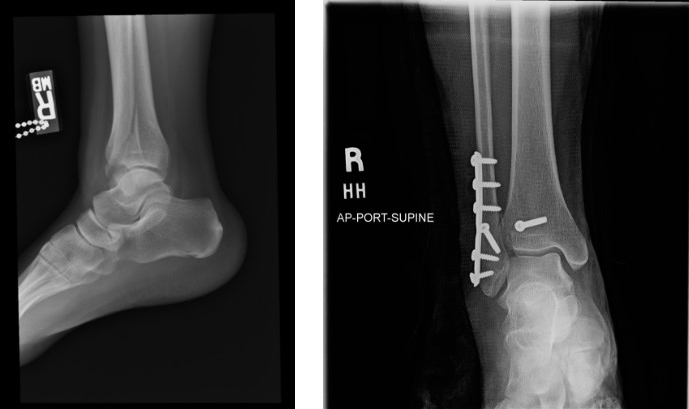
The idea is to keep the injured foot above the level of your heart in order to decrease swelling. Sit down or lie down, but keep the injured foot elevated. X Research source Leave the toes unbandaged if possible to easily check the circulation. X Research source Be careful that it's not so tight that it cuts off the circulation you'll know it's too tight if you experience numbness, tingling, or discoloration. According to board certified podiatrist Neal Blitz, wrapping the injured area in a bandage fairly snugly can help reduce swelling. Using crushed ice in a damp tea towel, ice the area for 20 minutes every two hours. Do not apply heat, which would encourage more blood to rush to the area and make the swelling worse. If your foot is fractured, it will soon start to swell, if it hasn't already. As soon as possible, put ice on the injured area. Board certified podiatrist Neal Blitz agrees that it's important to immobilize the area and stay off of it as much as possible so the fracture doesn't shift and become worse. No more exercising, running, or whatever it was you were doing when you felt the pain stop and get off your feet. Immediately stop what you are doing and refrain from any activities that cause pain to your foot. X Research source This is universal for any kind of bone fracture or stress fracture, and is the best way to treat a fracture at home for the first 72 hours after your injury or until you can seek medical care. According to board certified podiatrist Neal Blitz, the general principles of fracture treatment are rest, ice, compression, and elevation. This article has been viewed 203,584 times. In this case, 84% of readers who voted found the article helpful, earning it our reader-approved status. WikiHow marks an article as reader-approved once it receives enough positive feedback.

He is board certified in Foot Surgery and Reconstructive Rearfoot & Ankle Surgery and is also a Diplomate of the American Board of Foot & Ankle Surgery and a fellow of the American College of Foot & Ankle Surgeons (FACFAS). Blitz received his DPM from the New York College of Podiatric Medicine, then completed a residency focused on Elective & Reconstructive Foot & Ankle Surgery at the Swedish Medical Center, and was awarded an AO Trauma fellowship in Dresden, Germany, focused on trauma and reconstructive techniques. He has over 17 years of podiatric experience and specializes in minimally invasive foot and ankle surgery. Blitz is “The Bunion King®” and is the creator of the Bunionplasty® Procedure (plastic surgery for bunions) which has revolutionized bunion surgery. Neal Blitz is a Podiatrist and Foot & Ankle Surgeon who runs private practices in New York City and in Beverly Hills, California. This article was co-authored by Neal Blitz, DPM, FACFAS.


 0 kommentar(er)
0 kommentar(er)
